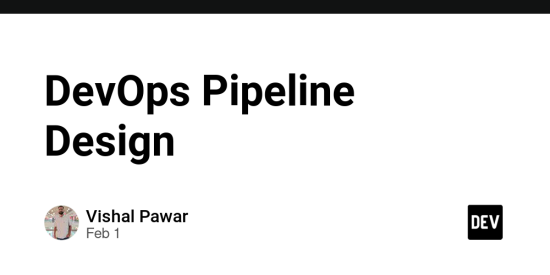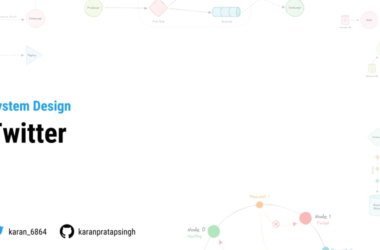Overview
This document presents an enhanced DevOps solution integrated into the Software Development Life Cycle (SDLC). The solution encompasses a deep understanding of DevOps’ necessity, a strategic selection of technologies and services, detailed stakeholder considerations, trade-offs analysis, and an end-to-end system explanation complemented by a visual sketch.
1. Need/Background of DevOps in SDLC
Understanding the Problem
The Software Development Life Cycle (SDLC) involves multiple stages: planning, development, testing, deployment, and maintenance. Traditionally, these phases were handled by separate teams, leading to several inefficiencies:
- Siloed Teams: Development (Dev) and Operations (Ops) teams work in isolation, causing communication gaps and misaligned goals.
- Delayed Deployments: Handoffs between teams result in extended release cycles and slower time-to-market.
- Inconsistent Environments: Discrepancies between development, testing, and production environments lead to unexpected bugs and deployment issues.
- Limited Feedback Loops: Inefficient feedback mechanisms hinder prompt issue resolution and continuous improvement.
Why DevOps is Essential
DevOps emerges as a solution to these challenges by fostering a culture of collaboration, automation, and continuous improvement. It bridges the gap between Dev and Ops, ensuring seamless integration and efficient workflow throughout the SDLC. This integration enhances:
- Speed: Accelerates release cycles through automation and continuous integration.
- Quality: Improves software quality via automated testing and continuous feedback.
- Reliability: Ensures consistent deployments and scalable infrastructure.
- Collaboration: Promotes shared responsibilities and unified objectives among teams.
2. Components of DevOps: Development and Operations
Development (Dev)
Dev focuses on creating and enhancing software applications. Key components include:
- Coding & Programming: Utilizing languages and frameworks like Python, Java, or Node.js.
- Version Control: Implementing Git repositories (e.g., GitHub, GitLab) for code management.
- Continuous Integration (CI): Employing tools like Jenkins or CircleCI to automate builds and tests.
- Feature Development: Leveraging Agile methodologies to develop new functionalities iteratively.
Operations (Ops)
Ops ensures the smooth deployment and maintenance of applications. Key components include:
- Infrastructure Management: Utilizing Infrastructure as Code (IaC) tools like Terraform or Ansible.
- Deployment Automation: Using containerization (Docker) and orchestration (Kubernetes) for streamlined deployments.
- Monitoring & Logging: Implementing tools like Prometheus, Grafana, and ELK Stack for real-time monitoring.
- Security & Compliance: Ensuring adherence to security protocols and regulatory standards using tools like HashiCorp Vault.
3. Strategic Selection of Technology Stack and Services
Technology Stack
- Programming Languages: Python and JavaScript for backend and frontend development.
- Frameworks: Django for backend, React for frontend.
- Version Control: Git with GitHub for repository management.
- CI/CD Tools: Jenkins for continuous integration, Docker for containerization, Kubernetes for orchestration.
- Cloud Services: AWS for scalable infrastructure, utilizing services like EC2, S3, RDS, and Lambda.
- Monitoring Tools: Prometheus for metrics collection, Grafana for visualization, ELK Stack for logging.
Justification
- Scalability: AWS offers scalable infrastructure, ensuring the system can handle increasing loads.
- Flexibility: Docker and Kubernetes provide flexibility in deployment and management of containerized applications.
- Automation: Jenkins automates the CI/CD pipeline, reducing manual interventions and accelerating deployments.
- Reliability: Terraform ensures consistent infrastructure provisioning, minimizing discrepancies across environments.
- Visibility: Prometheus and Grafana offer comprehensive monitoring, enabling proactive issue resolution.
4. Important Concepts for project planning and management
Key Elements Integrated
- Objectives: Enhance deployment speed, improve software quality, ensure system reliability.
- Stakeholders: Development teams, Operations teams, QA engineers, end-users, project managers.
- Resources: Cloud infrastructure (AWS), CI/CD tools (Jenkins), containerization (Docker), monitoring tools (Prometheus, Grafana).
- Constraints: Budget limitations, existing legacy systems, team expertise.
Design Patterns and Heuristics
- Microservices Architecture: Facilitates independent deployment and scalability of services.
- Infrastructure as Code (IaC): Ensures reproducible and version-controlled infrastructure provisioning.
- Continuous Feedback Loops: Implements real-time monitoring and feedback to drive continuous improvement.
- Automated Testing: Integrates unit, integration, and system tests within the CI pipeline to maintain high quality.
5. Trade-offs Consideration
Space vs. Cost
- Containerization: While Docker images consume storage space, they reduce deployment inconsistencies and operational costs by enabling efficient resource utilization.
Time vs. Quality
- Automated Testing: Investing time in comprehensive automated tests enhances software quality but may extend initial setup time.
Scalability vs. Complexity
- Kubernetes Orchestration: Offers robust scalability but introduces complexity in cluster management, requiring skilled personnel.
Cost vs. Performance
- Cloud Services Optimization: Balancing the use of high-performance instances with cost-effective alternatives to optimize expenditure without compromising performance.
Service Provider Selection vs. Custom Pipeline
-
Consideration: Choosing between major cloud service providers like Amazon Web
Services (AWS), Microsoft Azure, and Google Cloud Platform (GCP), or using a
combination of DevOps tools to build a custom pipeline. -
Solution: Evaluate the specific requirements and constraints of the project to
determine whether leveraging the integrated services of a major provider for
simplicity and support, or creating a tailored solution with specialized tools for
greater flexibility and potential cost savings.
3. Detailed Pipeline Stages
-
Plan:
-
Requirement Assessment and Finalization: Collaborate with stakeholders to gather
and finalize project requirements, ensuring that all necessary features and constraints
are clearly defined and understood. -
Timeline Estimation and Finalization: Estimate the timeline for each phase of the
pipeline design and finalize deadlines to ensure timely delivery and efficient resource
allocation. -
Task Assignment: Assign specific tasks to team members based on their expertise
and roles, facilitating a structured and organized approach to pipeline development
-
Requirement Assessment and Finalization: Collaborate with stakeholders to gather
- Source Code Management:
- Action: Developers write and commit code to a Git repository.
-
Tools: Git platforms like GitHub, GitLab, or Bitbucket; integrated development
environments (IDEs) such as VS Code and IntelliJ; and local development environments
for efficient coding and testing. -
Best Practices: Implement branching strategies (e.g., Gitflow) and enforce code
reviews to maintain code quality and facilitate collaboration.
- Continuous Integration (CI):
-
Build:
- Action: Jenkins automatically triggers a build process upon code commits.
-
Details: The build stage compiles the code, resolves dependencies, and packages
the application, ensuring that the codebase remains in a deployable state.
-
Test:
- Action: Automated tests are executed to verify code quality and functionality.
- Tools: Unit tests, integration tests, and static code analysis tools.
-
Best Practices: Incorporate a comprehensive test suite to catch issues early
and maintain high code quality standards.
- Continuous Deployment (CD):
-
Staging Environment:
-
Action: Deploy the built application to a staging environment that mirrors
production. -
Purpose: Conduct further testing, including user acceptance testing (UAT) and
performance testing, to validate the application’s readiness for production.
-
Action: Deploy the built application to a staging environment that mirrors
-
Approval:
-
Action: Implement a manual or automated approval process before deploying to
production. -
Details: This step ensures that all tests have passed and that stakeholders
have reviewed the changes, adding an additional layer of quality control.
-
Action: Implement a manual or automated approval process before deploying to
-
Production Deployment:
-
Action: Deploy the application to the production environment using strategies
like blue-green or canary deployments. -
Blue-Green Deployment: Involves running two identical production environments
(blue and green) and switching traffic from one to the other, minimizing downtime and
risks. -
Canary Deployment: Gradually rolls out changes to a small subset of users before
a full-scale release, allowing for monitoring and rollback if issues arise.
-
Action: Deploy the application to the production environment using strategies
-
Monitoring and Feedback:
- Action: Continuously monitor application performance and gather user feedback.
-
Tools: Prometheus for metrics, Grafana for visualization, and ELK stack for log
analysis. -
Purpose: Identify and resolve issues proactively, gather insights for
improvement, and ensure the application meets user expectations.
A DevOps pipeline typically consists of several interconnected stages, each contributing to the seamless delivery of software from development to production:
6. End-to-End System Explanation
User Journey
- Development Phase:
- Developers write code using preferred languages and frameworks.
- Code is committed to a GitHub repository, triggering the CI pipeline in Jenkins.
- Continuous Integration:
- Jenkins automatically builds the application and runs automated tests.
- Upon successful tests, Docker images are created and pushed to AWS Elastic Container Registry (ECR).
- Deployment Phase:
- Kubernetes orchestrates the deployment of Docker containers to AWS Elastic Kubernetes Service (EKS).
- Infrastructure changes are managed via Terraform scripts, ensuring consistency across environments.
- Monitoring and Feedback:
- Prometheus collects metrics, while Grafana visualizes system performance.
- The ELK Stack aggregates logs, providing insights into application behavior.
- Real-time alerts are sent to relevant teams for prompt issue resolution.
-
Maintenance and Scaling:
- Based on monitoring data, the system auto-scales using Kubernetes to handle varying loads.
- Regular updates and patches are deployed through the CI/CD pipeline, maintaining system reliability.
8. Conclusion
By integrating DevOps into the SDLC, organizations can achieve a harmonious balance between development speed and operational reliability. The strategic selection of technologies, adherence to best practices, and meticulous consideration of trade-offs ensure a robust, scalable, and efficient system. This comprehensive approach not only addresses existing challenges but also positions the organization for continuous growth and innovation.




![[boost]](https://prodsens.live/wp-content/uploads/2025/02/31263-boost-110x110.png)


